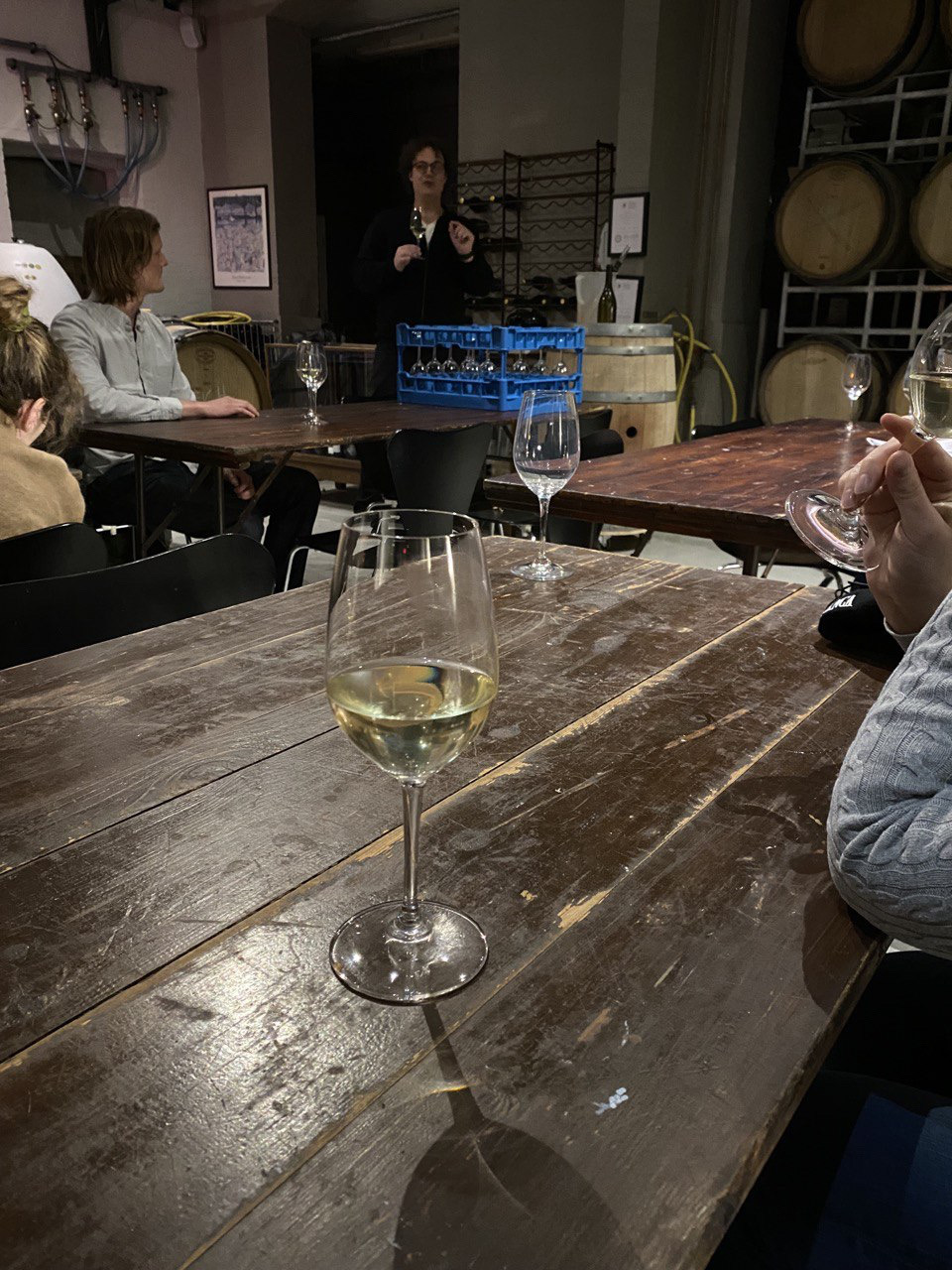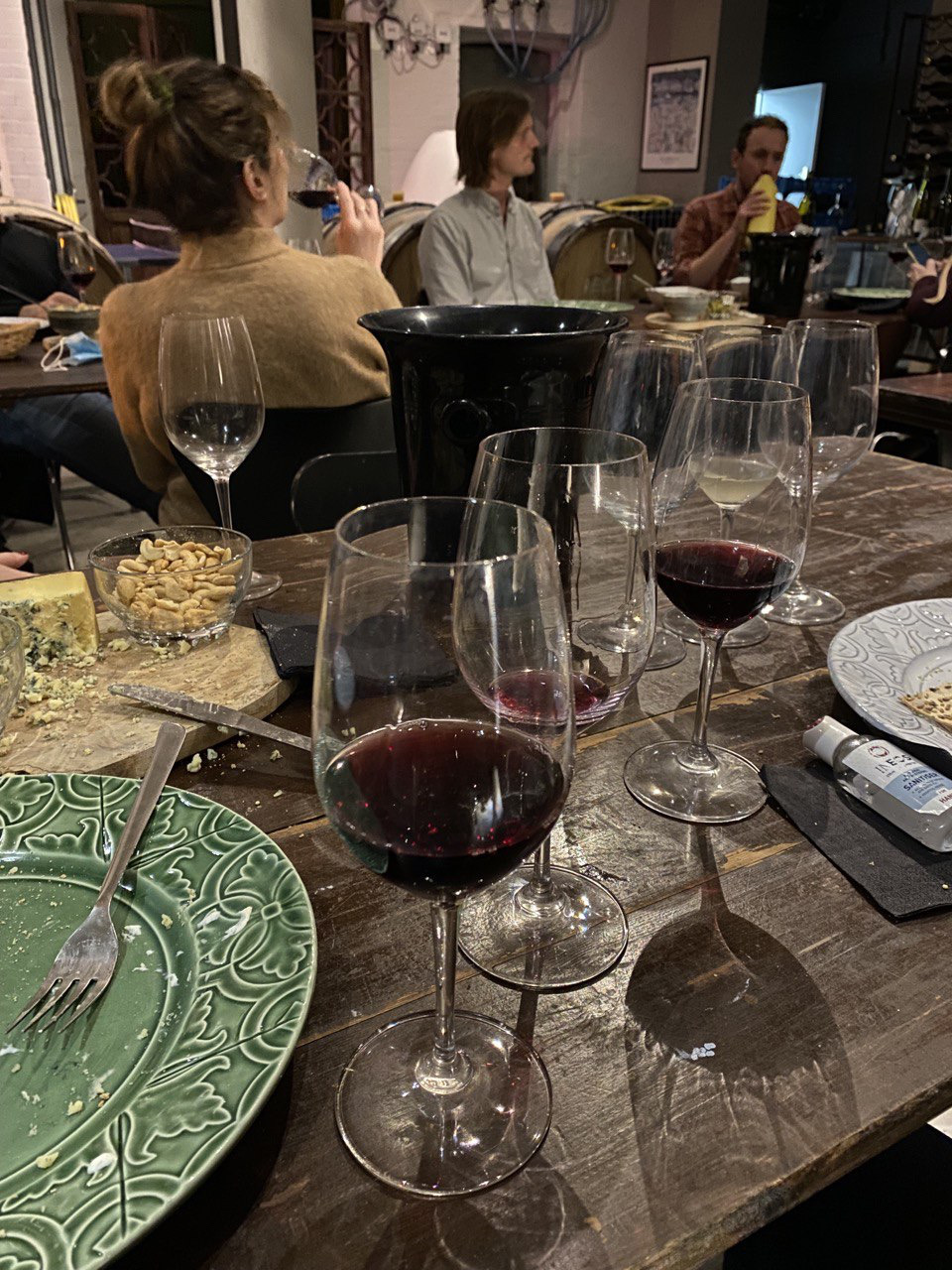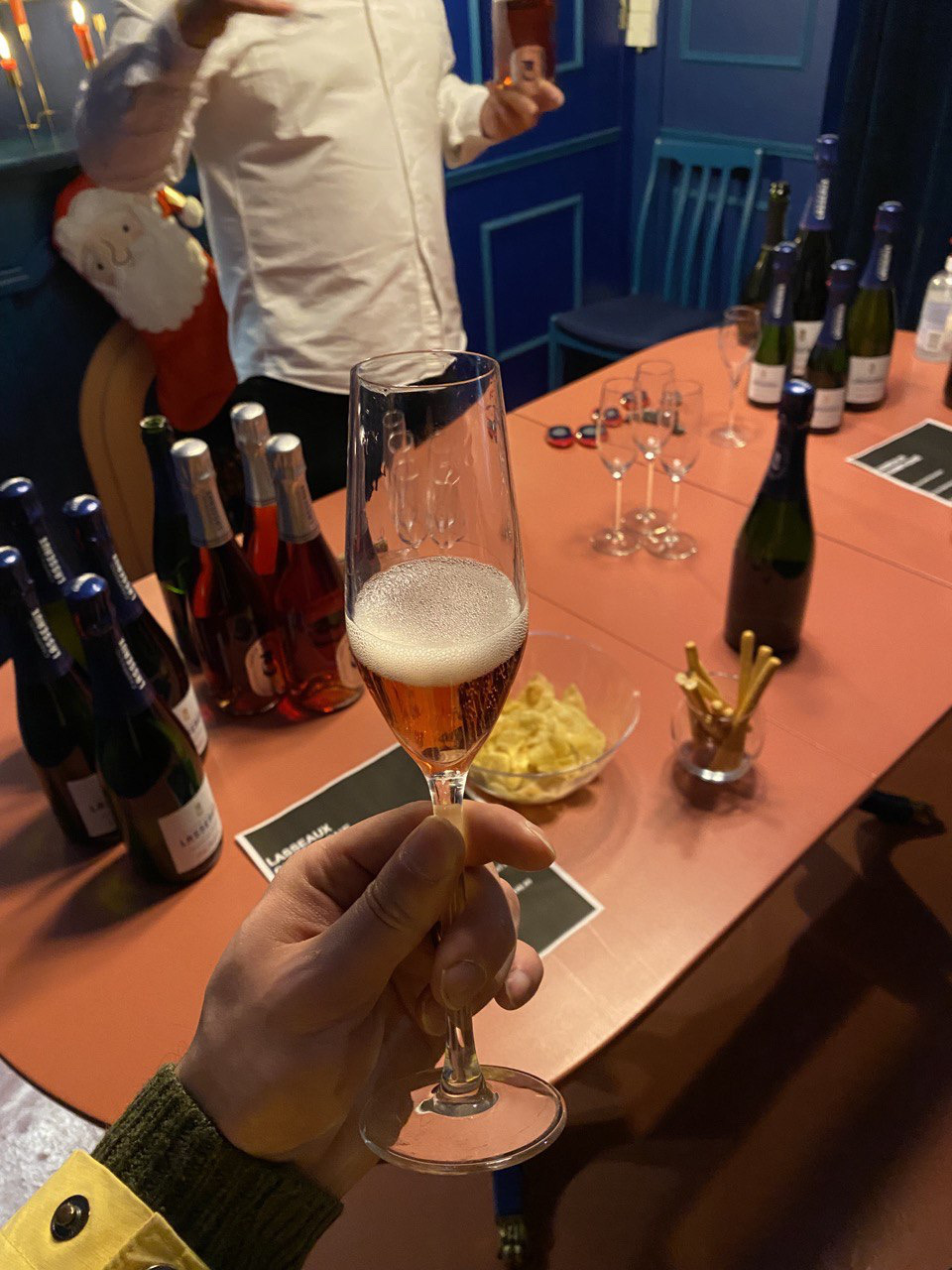Tuesday Triage #73
- TUESDAY TRIAGE #73 by Vadim Drobinin
- On wine stages
- Things I enjoyed reading
- 1. Drinking year-old eggnog to put science to the test by Julia Thiel
- 2. Here's Why Movie Dialogue Has Gotten More Difficult To Understand (And Three Ways To Fix It) by Ben Pearson
- 3. The Church of the Clocked Screws by lostartpress
- 4. How we became weekly by David Henkin
- 5. What is Hammock Driven Development? by Keagan Stokoe
- 6. Hayao Miyazaki Prepares to Cast One Last Spell by Ligaya Mishan
- 7. Queen of Clean by Maddy Crowell
- 8. The weirdest book in the world just turned 40. We talked to its creator by Chris Kaye
- 9. How to rest well by Alex Soojung-Kim Pang
- 10. Learning Sixteenth-Century Business Jargon by Edmond Smith
- Things I didn't know last Tuesday
- 1. Sláinte
- 2. Snail caviar
- 3. Ebers Papyrus
- 4. Why do we kiss under misletoe?
- 5. Anthocyanins
- 6. Nonsuch Palace
- 7. Boustrophedon
- 8. Chronotherapy
- 9.Close (jp.)
- 10. Hell banquet
- Book of the week
TUESDAY TRIAGE #73 by Vadim Drobinin ¶
Your weekly crème de la crème of the Internet is here! The 73rd edition of Tuesday Triage, featuring snail caviar, Nonsuch palace, and slainte.
07.12.2021 (read in browser)
-
Intro
Whatever is on my mind this week. -
Things I enjoyed reading
Ten-ish articles I found worth reading. -
Things I didn't know last Tuesday
Ten-ish facts I didn't know when I wrote the previous edition. -
Book of the week
Some thoughts on the latest book I've read.
On wine stages ¶
Last seven days were probably too intense to cover in a single newsletter’s edition, so I might take up a part of the next one as well.
However going in chronological order would be only fair, and last week we had a chance to sample some of the wines we made in October and November.
As you probably remember, I was mostly excited about Bacchus and Reichensteiner, while Chardonnay the fruit was unbearably sour (which is fine as it is meant for sparkling wines).
To be honest, none of the wines I dabbled in were as good as I would expect given my input, but the winemaker was very optimistic and said that they all need way more time.

We’ve also tried a bunch of reds (from other wineries as well) and had lots of fun discussing their flaws.

A day later we’ve stopped by a Champagne tasting to learn more about some of them, and even tried a Champagne Rose made through long skin contact (usually Champagne producers are allowed to add 10-15% of Pinot Noire or some other red wine to their sparkling and call it a “rose”, but this wasn’t the case).

And last but not least, we had friends over which is always a great reason to buckle up your local butcher and cook a mix of ox tongues, ox cheeks, and ox tails for a riff on Bottura’s famous ragu, this time in a lasagna shape.

Takes ages but is well worth the hassle.

And before I wrap up the proem, today is Tuesday, the 7th of December.
A nice thing about Tuesdays is that it’s the day when I send out this newsletter.
And a nice thing about the 7th of December is that it’s the day when my wife Sasha was born.
The 7th of December is very rarely a Tuesday: last time it happened in 2010, and the next time it will happen only in 2027, so I can’t really miss the opportunity to wish my very first (and most patient) subscriber a happy birthday ❤️
Things I enjoyed reading ¶
1. Drinking year-old eggnog to put science to the test by Julia Thiel ¶
‘tis the seasons to be jolly, and while eggnogs somehow weren’t a thing in my childhood, I thought it’s pretty straightforward… until apparently you age them.
There is nothing wrong with aging cocktails, unless they contain dairy or eggs, and as you can guess eggnogs are essentially just eggs with cream, spiced with a tad of booze, so you just drink it fresh.
Or do you?
The year-old version looked identical at first, but when I poured it, I realized it had become thicker and more viscous. I’d expected the extra aging to mellow the booze and meld the flavors, but it did just the opposite. The alcohol asserted itself sharply at the forefront, followed by creamy sweetness. There was more depth and complexity of flavor than there was in the three-week-old version, but the booziness made it a little difficult to drink.
The author managed to keep it drinkable after a year in the fridge without involving any alchemy, only wast amounts of alcohol, but apparently people have been aging it for centuries anyway (as eggs were hard to come by in the winter).
It’s probably too late to make one for Christmas, but you still have a bit of time left before the New Year’s Eve.
2. Here's Why Movie Dialogue Has Gotten More Difficult To Understand (And Three Ways To Fix It) by Ben Pearson ¶
The majority of movies I’ve seen over the last five years were in a foreign language, and even though some of them had subtitles, it is still a bit different to watching something in your mother’s tongue.
For one, you are missing out on some cultural references, but also gain the original intonations, accents, and emotions.
When it comes to dialogue unintelligibility, one name looms above all others: Christopher Nolan. The director of “Tenet,” “Interstellar,” and “The Dark Knight Rises” is one of the most successful filmmakers of his generation, and he uses his power to make sure his films push the boundaries of sound design, often resulting in scenes in which audiences literally cannot understand what his characters say. And it's not just audiences who have trouble with some Nolan films: the director has even revealed that other filmmakers have reached out to him to complain about this issue in his movies.
I can’t really complain about dialogues getting hard to understand though, as five years ago I definitely struggled way more, but that’s just practice I suppose. Nolan is hard to understand regardless of the language.
3. The Church of the Clocked Screws by lostartpress ¶
Here is something I never thought of, despite to torquing my share of screws over the years. It makes lots of sense in retrospective, and this article probably would be to blame for whenever I DIY anything from now on.
Clocking screws is not a matter of over-torquing or under-torquing screw heads. It’s a simple matter of thinking about the problem for two seconds and devising a simple solution.
Screws are mass-manufactured items. The slot and the worm of a batch of screws are consistent across all the screws in a box. Now add to the equation a pilot hole (or counterbore) that is the same diameter every time. How can we use these consistencies to clock the screw?
Also I already started to pay attention to clocked screws in museum and churches I come across. Give it a try too.
4. How we became weekly by David Henkin ¶
Did you ever thought about the difference between weeks and all other units of time? And how come we stick to these counts of seven for centuries despite being completely man-made?
Weeks serve as powerful mnemonic anchors because they are fundamentally artificial. Unlike days, months and years, all of which track, approximate, mimic or at least allude to some natural process (with hours, minutes and seconds representing neat fractions of those larger units), the week finds its foundation entirely in history. To say ‘today is Tuesday’ is to make a claim about the past rather than about the stars or the tides or the weather. We are asserting that a certain number of days, reckoned by uninterrupted counts of seven, separate today from some earlier moment.
My day-to-day work involves dates, timestamps, and timezones, the knowledge of which behaviour comes at a price of being aware of things that might go wrong when the time is involved, so even thinking of the world where everything is based on anything besides 7-day weeks gives me shivers.
5. What is Hammock Driven Development? by Keagan Stokoe ¶
The title is funny just because people love talking about something-driven development approaches this way. Give it time to soak in though, as it does make sense.
This is where the hammock comes in. One of the great things about the hammock is that if you lie down with your eyes closed, no one knows you’re not sleeping and they won’t bother you because you might be sleeping so you can focus completely on your problem without interruptions.
The computer is a prime source of distractions – you need to get away from the computer if you want to focus. Build focus time into your calendar. It won't just happen and you need to create that time and space if you want to do your best work.
My only complaint would be that no way I am lying in a hammock with my eyes closed and not falling asleep anyway.
6. Hayao Miyazaki Prepares to Cast One Last Spell by Ligaya Mishan ¶
I never loved cartoons (or animated movies for that matter), and watched only a few Miyazaki’s works, but he rarely talks on a record, so that’s a story not to miss, especially given that he might release a new title in the midst of voluntary retirement.
It is time. Miyazaki rubs the top of his head and lights a cigarette, one of his signature king-size, charcoal-filtered Seven Stars. I am allowed one last question. “The title of your next film is ‘How Do You Live?,’” I say. “Will you give us the answer?” The smile comes only after he speaks: “I am making this movie because I do not have the answer.”
That is also a great reason to do anything: the answer might come later.
7. Queen of Clean by Maddy Crowell ¶
A completely different time of an interview, albeit not less powerful.
We (as people in general) rarely notice service people unless pay attention on purpose: cleaners, waiters, garbage collectors go missing from our focus.
Some rooms are so cluttered it’s hard to see the carpet. Some people treat the room like it’s their own house, separating dirty clothes from the clean clothes. Every guest is different. Every guest has their thing. One time, Vida found a room so organized that the pens were equidistant from one another on the bedside table; a suitcase packed neatly, compartmentalized by item, lay open on the luggage rack. Wow, Vida thought, I wish this had been my family. Sometimes guests will smile to her face, then complain to the hotel manager that their room wasn’t clean enough. Sometimes the guests stay in the room, working, while she cleans. Vida doesn’t like the feeling of being watched, of being judged. So she tries to make herself invisible, tiptoeing around the room—preferring not to be noticed.
Bartenders are probably an exception as people enjoy interacting with them, but even then this is an artificial connection. The majority of those behind the bar don’t bother remembering stories and build a rapport with any guest, it’s often their job to make you feel in the company of friends.
8. The weirdest book in the world just turned 40. We talked to its creator by Chris Kaye ¶
I am pretty sure I wrote about the Codex before, as it is one of those books that make total sense either to no one, or very rarely only to its creator, but as the latter is rarely available for questioning, this is a rare chance to get a glimpse of what went into the creatives behind it.
He refused to tell me his favorite drawing in the Codex, but Serafini, who keeps up with technology and social media, said he found it interesting to discover images from the Codex people choose to get as tattoos: "It's not my favorite but the fish with the eyes, the fish eyes, the eyes fishes. That was really strange to see the drawings transform into tattoos," he says. "And I imagine that maybe now there is a Codex on the skin of the people that are walking around the world. And something I would like to do one day is to gather all these people with tattoos of the Codex and create a living Codex."
As someone who loves reading, I certainly understand an appeal of owning a book (maybe the only one ever) you can’t read no matter how much effort you put into it.
9. How to rest well by Alex Soojung-Kim Pang ¶
Judging by the folks around, December is the right time to wind down and take time to rest, so if you do need a manual to break out of the routine here is one.
Rest is like breathing or running. On the one hand, it’s completely natural; on the other hand, it’s something you can learn to do better and, in so doing, you’ll more effectively harness its power to benefit other aspects of your life. Just as swimmers and Buddhist monks learn to use their breath to maintain energy or calm their minds, busy people need to learn how to rest in ways that will help them recharge their mental and physical batteries, and get a burst of creative insight. That requires developing new daily practices, and thinking differently about rest.
I wish I read this article and could answer the question myself; to be fair I got even more confused but it was worth a try anyway.
10. Learning Sixteenth-Century Business Jargon by Edmond Smith ¶
One of my favourite books was written centuries ago by Mark Twain, whose A Connecticut Yankee in King Arthur's Court transfers a person from the 19th century back into the 6th century, where his knowledge turns him into probably the most powerful person in the country.
Despite being very realistic in some details, it definitely missed out on these ones:
Business was conducted in multilingual and cross-cultural environments and the need to communicate with merchants, manufacturers, brokers, and officials in markets across the world meant that mastery of languages, or even competence, was in great demand. Finding merchants able to operate in these different linguistic environments was not always easy, especially in trades where English was never likely to be helpful. The East India Company, for instance, was reliant on Spanish- and Portuguese-speakers to engage with Asian rulers, and “Richard Temple who had the Spanish tongue” was propelled to a position of great importance when he was appointed to act as an interpreter between Paul Canning and the Mughal emperor Jahangir in Agra.
What’s interesting is that it includes not only the language skills but also the cultural understanding and many more things.
Things I didn't know last Tuesday ¶
1. Sláinte ¶
I had a chance to cheer with people in England and Wales so far, but now it is time for Scotland (where I haven’t been before, actually).
Sláinte means "health" in Irish and Scottish Gaelic. It is commonly used as a drinking toast in Ireland, Scotland and the Isle of Man.
An extra point goes for choosing a proper reply if someone tells you “slainte!” (there are a few behind the link).
2. Snail caviar ¶
Up until now I thought I tried all types of caviar out there (think meh caviar, red caviar, and black caviar, all of which were available in abundance in my childhood, thanks to post-Soviet supplies).
This is however a completely different story.
Snail caviar, also known as escargot caviar or escargot pearls, is a type of caviar that consists of fresh or processed eggs of land snails. It is a luxury gourmet speciality produced in France and Poland. They were also a delicacy in the ancient world, also known as "Pearls of Aphrodite" for their supposed aphrodisiac properties.
It sounds… disgusting? But I would try anyway, I mean look at it:

3. Ebers Papyrus ¶
Another important chunk of history because it includes insect repellents (and that to me is one of the most important inventions to date):
The Ebers Papyrus, also known as Papyrus Ebers, is an Egyptian medical papyrus of herbal knowledge dating to circa 1550 BC.
Looks ancient, and is stored in Germany:

4. Why do we kiss under misletoe? ¶
For a very long time I was mistaking a mistletoe for a bunch of other plants (does it mean I was bothering girls with kisses under every second tree during Christmas? I don’t know), but even then heard a bunch of myths about its way towards the modern culture.
This one is new:
Because mistletoe could blossom even during the frozen winter, the Druids came to view it as a sacred symbol of vivacity, and they administered it to humans and animals alike in the hope of restoring fertility.
There are more options obviously, but they are more recent so probably are wrong.
5. Anthocyanins ¶
Apparently (obviously!) the change in leaves’ colour is caused by flavonoids, which work like a litmus test for the pH levels.
Some leaves make flavonoids. Anthocyanins are flavonoids which vary in color depending on pH. Anthocyanins are not usually present in leaves during the growing season. Instead, plants produce them as temperatures drop. They acts as a natural sunscreen and protect against cold damage. Anthocyanins also deter some insects that like to overwinter on plants and discourage new seedlings from sprouting too close to the parent plant. Plants need energy from light to make anthocyanins. So, vivid red and purple fall colors only appear if there are several sunny sautumn days in a row.

The fact that it doesn’t work without sunny weather is pretty cool too. One could tell what was the weather like just by a few Autumn photos.
6. Nonsuch Palace ¶
Henry VIII started a palace and it looked pretty cool.

The name’s origins are pretty fun too:
Within two months the name "Nonsuch" appears in the building accounts, its name a boast that there was no such palace elsewhere equal to it in magnificence. Construction had been substantially carried out by 1541, but it took several more years to complete.
However as the palace got completely destroyed by now, the name didn’t age well (or aged too well).
7. Boustrophedon ¶
I was looking into Rosetta stone’s history last week and this is somewhat related, as one of the reasons it took so long to understand the cypher was that some researchers suspected it was written in boustrophedon.
Boustrophedon is a style of writing in which alternate lines of writing are reversed, with reversed letters. This is in contrast to lines always beginning on the same side, usually the left, as in modern European languages.
This is an artificial example just to make some sense:
8. Chronotherapy ¶
If an article on resting well didn’t help, there is another way:
In chronotherapy, an attempt is made to move bedtime and rising time later and later each day, around the clock, until a person is sleeping on a normal schedule. This treatment can be used by people with delayed sleep phase disorder (DSWPD), who generally cannot reset their circadian rhythm by moving their bedtime and rising time earlier.
So if you want to go to sleep at 8 pm every day, but manages to fall asleep only at 2 am, go to sleep at 3 am the next day, and then at 4 am the next day, and so on until eventually you got to sleep at 8 pm (a week or two later).
Apparently it resets the sleep phases and works pretty well judging by the statistics.
9.Close (jp.) ¶
Here is a funny linguistics trivia:
Consider CLOSE in the McDonald’s sign from Japan below. It’s not a typo, it’s not even meant for English speakers. The Japanese have ‘loaned’ the English word ‘closed’ and adapted it for their own purposes. Don’t ask me why, but they have. As twisted as it sounds, ‘close’ is Japanese for the English word ‘closed.’ Get it? See why I love Japan.
I’d like to learn Japanese more than Chinese as it just looks way more fun, but I still have more realistic expectations to wrap up Hebrew and Italian first (I don’t really do much for it though).
10. Hell banquet ¶
There is a trend to mimic parties from 20s or 60s for birthdays and Christmas celebrations.
I despise the idea in general, but if I were to make one it’d be like that:
The frightened guests looked to their host for an explanation. “Gentlemen, eat,” Strozzi instructed instead. But, according to one account, “no one wanted to eat, because it was such a terrifying scene.” Just when his guests couldn’t take any more (at least two cardinals vomited that day), Strozzi orchestrated the grand finale, cracking open the skull and bones to reveal they were fake, and filled with roast pheasant and sausages.
Dress-code could be pretty relaxed though.
Book of the week ¶
By now I probably wrote way more about Nordic cuisine than any other, and yet I can’t get enough books to satisfy the craving for even better understanding of its rules.
If I were to define the main idea, it’d be quite straightforward: fresh local ingredients and simple pairings. But fresh German ingredients and a simple sirloin steak won’t turn a dish into something Nordic, and neither will a bunch of herbs and smoking piece of wood.
There must be something else.
David Johansen is trying to convey his thoughts on the matter in Kokkeriet, named after the Danish restaurant:
But how do you do that, when every single plate is already aspiring to perfection? When the waiters speak the native language of each guest, so no foreign visitor may miss an explanation or a story? And when the welcome in the restaurant is warmer than in one’s own family? How much more is there to give?
”Our extra dimension must be memories. We must create memories,” ponders Sammy. ”Eating at Kokkeriet is o"en something to be remembered by the guests. An experience, they think back on. Just think, if we could both create a new, gastronomic memory and at the same time get them to recollect their own childhood? !e scent of scalloped potatoes. Parsley sauce. Italian salad ... But in a whole new way ... ”
”What about the foreign guests?” asks Mikkel, for it was precisely a foreign guest – the American woman – who set off the entire Danish voyage.
”For the foreign guests, it will be an encounter with Danish gastronomy which has so much more to offer than ‘smørrebrød’,” Sammy concludes. Bookings are pouring in. !e regulars are excited and the same goes for new guests.
Kokkeriet is an unusual place for the Nordic world. They’ve started with impeccable French cuisine and eventually got a Michelin star — but then did a U-turn, switched to exclusively local produce and recipes and lost the star — but never gave up and kept experimenting, so eventually the star came back, but for their Danish cuisine this time.
And probably the biggest value of the book for me is the glimpse of the struggle chefs faced during all these changes, which is now reflected in their values and menus.
Also the recipes are quite fun and not too complicated (that’s how Nordic cuisine rolls).
If you have any questions, or want to suggest a link for the next newsletter, please drop me a message on Twitter or reply to this email.
Cheers! 🍸